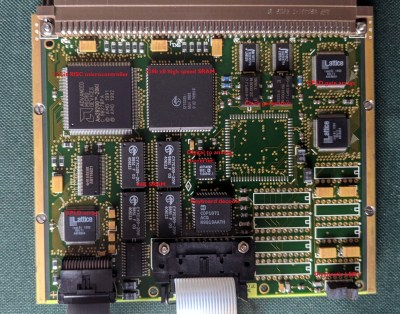Well, that de-escalated quickly! It was less than a week ago that the city of Shenzhen, China was put on lockdown due to a resurgence of COVID-19 in the world’s electronics manufacturing epicenter. This obviously caused no small amount of alarm up and down the electronics supply chain, promising to once again upset manufacturers seeking everything from PCBs to components to complete electronic assemblies. But just a few days later, the Chinese government announced that the Shenzhen lockdown was over. At least partially, that is — factories and public transportation have been reopened in five of the city’s districts, with iPhone maker Foxconn, one of the bigger players in Shenzhen, given the green light to partially reopen. What does this mean for hobbyists’ ability to get cheap PCBs made quickly? That’s hard to say, at least at this point. Please feel free to share your experiences with any supply chain disruptions in the comments below.
Better news from a million miles away, as NASA announced that the James Webb Space Telescope finished the first part of its complex mirror alignment procedure. The process, which uses the complex actuators built into each of the 18 hexagonal mirror segments, slightly moves each mirror to align them all into one virtual optical surface. The result is not only the stunning “selfie” images we’ve been seeing, but also a beautiful picture of the star Webb has been focusing on as a target. The video below explains the process in some detail, along with sharing that the next step is to move the mirrors in and out, or “piston” them, so that the 18 separate wavefronts all align to send light to the instruments in perfect phase. Talk about precision!
Is a bog-standard Raspberry Pi just not tough enough for your application? Do you need to run DOOM on a platform that can take a few g of vibration and still keep working? Sick of your Pi-based weather station breaking own when it gets a little wet or too hot? Then you’ll want to take a look at the DuraCOR Pi, a ruggedized chassis containing a Pi CM4 that’s built for extreme environments. The machine is in a tiny IP67-rated case and built to MIL-STD specs with regard to vibration, temperature, humidity, and EMI conditions. This doesn’t really seem like something aimed at the hobbyist market — it’s marketed by Curtiss-Wright Defense Solutions, a defense contractor that traces its roots all the way back to a couple of bicycle mechanics from Ohio that learned how to fly. So this Pi is probably more like something you’d spec if you were building a UAV or something like that. Still, it’s cool to know such things are out there.
BrainLubeOnline has a fun collection of X-rays. With the exception of a mouse — the other kind — everything is either electronic or mechanical, which makes for really interesting pictures. Seeing the teeth on a gear or the threads on a screw, and seeing right through the object, shows the mechanical world in a whole new light — literally.
And finally, would you buy a car that prevents you from opening the hood? Most of us probably wouldn’t, but then again, most of us probably wouldn’t buy a Mercedes EQS 580 electric sedan. Sarah from Sarah -n- Tuned on YouTube somehow got a hold of one of these babies, which she aptly describes as a “German spaceship,” and took it for a test drive, including a “full beans” acceleration test. Just after that neck-snapping ride, at about the 7:20 mark in the video below, she asks the car’s built-in assistant to open the hood, a request the car refused by saying, “The hood may only be opened by a specialist workshop.” Sarah managed to get it open anyway, and it’s not a frunk — it’s home to one of the two motors that power the car, along with all kinds of other goodies.














